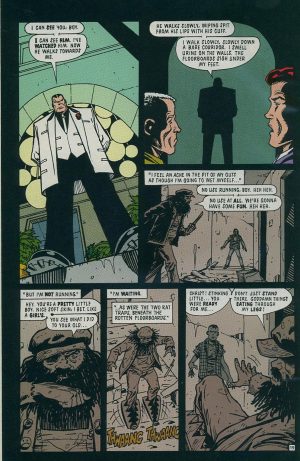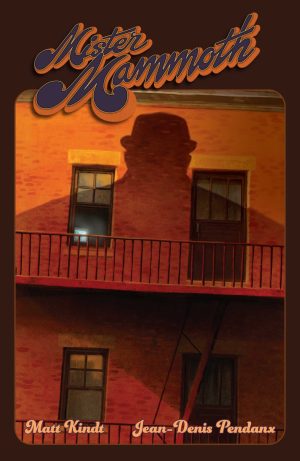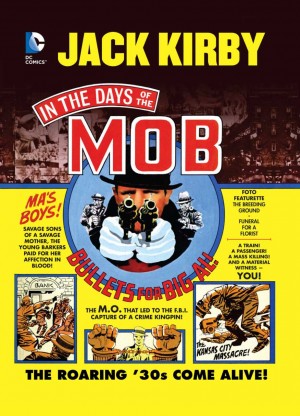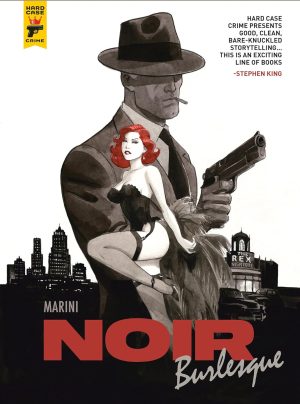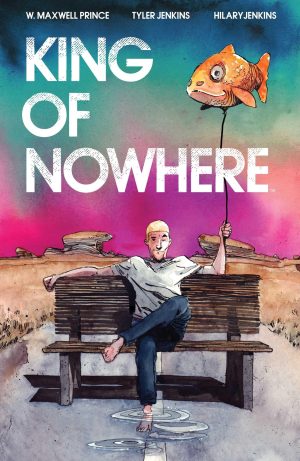Review by Karl Verhoven
After some success in the UK, in the late 1980s Peter Milligan was headhunted by DC to produce something for them. It speaks volumes as to his ambition, attitude and talent that the result concerned a tormented gangster, literally standing on the precipice, featuring allusions to James Joyce’s Finnegan’s Wake, an especially challenging piece of literature, and the doggerel song from which Joyce took the title.
In addition, Skreemer has a complex timescale, the past revealed in long segments as in the present day pivotal events occur, while the narrator’s captions offer the perspective of hindsight from a generation in the future. “I was born in the age called the rebuilding”, advises the Finnegan from the future, “This is the story of the age that preceded it. The age of the giant”. It’s an age where criminal gangs control the USA, and Veto Skreemer is playing the long game, joined as he begins his plan to wipe out the opposition and take sole charge.
Milligan portrays Skreemer as convinced of his own destiny, but distant and detached, in the present rarely seen anywhere other than a ledge in his home, specifically constructed to enable him to peer into the drop below. As he ponders predetermination, his grim past and that of colleagues he’s known since childhood is played out. The counterpoint is Charles Finnegan, a man scrabbling to feed his family in an utterly corrupt society and eventually facing inhumane and appalling choices.
The art is credited to Brett Ewins and Steve Dillon, and at first the demarcation point is clear, with Ewins on the present day sequences, and Dillon’s more imaginative storytelling on the flashbacks. However, that seems to change, and the further into the story we head, Dillon becomes the dominant artist. Crucial here is colourist Tom Ziuko, much favoured at DC/Vertigo in the late 1980s and early 1990s, but his work now looks very primitive. The present day scenes are garish, while the flashbacks are given a muddy brown wash, and when over fifty percent of the story is set in the past it makes for many dull looking pages.
Try to get over that as Skreemer is a thoughtful, atmospheric and powerful crime drama with intelligent characters and ideas that remain compelling all these years later. It surely wasn’t what DC expected in 1989, but how much of their other output from that year remains as readable?

